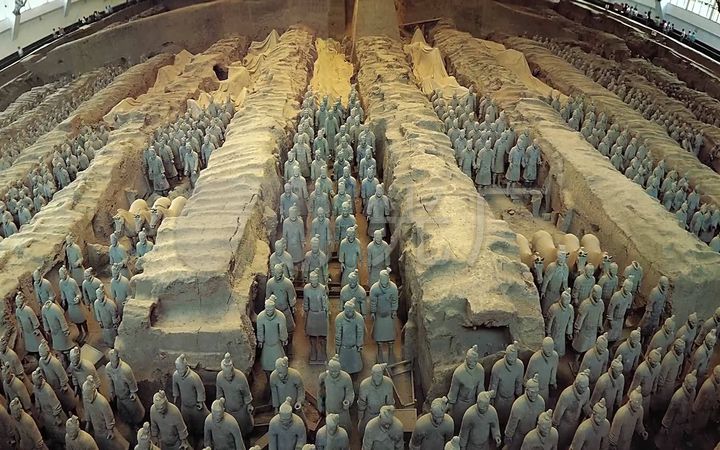The Terracotta Warriors, also known as the Terracotta Army, are a collection of more than 8,000 life-size clay soldiers, horses, and chariots that were buried with the first emperor of China, Qin Shi Huang, in 210 BCE. The site of the Terracotta Warriors is located near the city of Xi’an in Shaanxi province, in the central part of China. The discovery of this vast underground army was one of the most significant archaeological finds of the 20th century and has provided valuable insights into the culture and history of ancient China.
Discovery of Terracotta Warriors
The discovery of the Terracotta Warriors dates back to 1974 when local farmers discovered a group of broken pottery pieces while digging a well. The farmers reported their discovery to the authorities, and archaeologists were dispatched to investigate the site. They soon uncovered an enormous underground complex that contained thousands of life-size terracotta figures arranged in military formation.
The Terracotta Warriors were created to protect the emperor in his afterlife. Qin Shi Huang, the first emperor of China, had ordered the construction of his tomb during his lifetime, and he demanded that an army be built to guard his tomb after his death. The construction of the Terracotta Warriors began soon after the emperor’s accession to the throne, and it continued for over 35 years until his death in 210 BCE.
The Terracotta Warriors were created by skilled artisans who used clay to sculpt each figure in intricate detail. Each soldier was unique, with different facial features, hairstyles, and clothing, and they were arranged in military formation, with archers, chariots, and cavalry in the front, and infantry soldiers in the back.
The Terracotta Warriors were buried in pits, with each pit containing a different part of the army. Pit 1 is the largest and contains over 6,000 soldiers, horses, and chariots. Pit 2 contains around 1,300 figures, including chariots and cavalry, while Pit 3 is the smallest, with only 68 soldiers.
Terracotta Warriors Now
In addition to the Terracotta Warriors, the tomb complex also contains a range of other valuable artefacts, including bronze weapons, jade jewellery, and gold ornaments. The tomb itself has not yet been excavated, as archaeologists are waiting for the necessary technology to become available to preserve the delicate artefacts inside.
The discovery of the Terracotta Warriors has shed new light on the culture and history of ancient China. The construction of the army is a testament to the power and ambition of the first emperor of China, Qin Shi Huang, and it provides valuable insights into the military technology and tactics of the time. The intricate detail and unique features of each figure also reveal the artistic skill and craftsmanship of ancient Chinese artisans.
The Terracotta Warriors have become one of the most popular tourist attractions in China, drawing millions of visitors each year. The site has been designated a UNESCO World Heritage Site and is considered one of the greatest archaeological discoveries of the 20th century.
The Terracotta Warriors are an extraordinary archaeological find that has captured the imagination of people around the world. The vast underground army is a testament to the power and ambition of ancient China, and it provides valuable insights into the culture and history of the time. The intricate detail and artistic skill of the Terracotta Warriors continue to fascinate and inspire people today, making it a true treasure of ancient China.